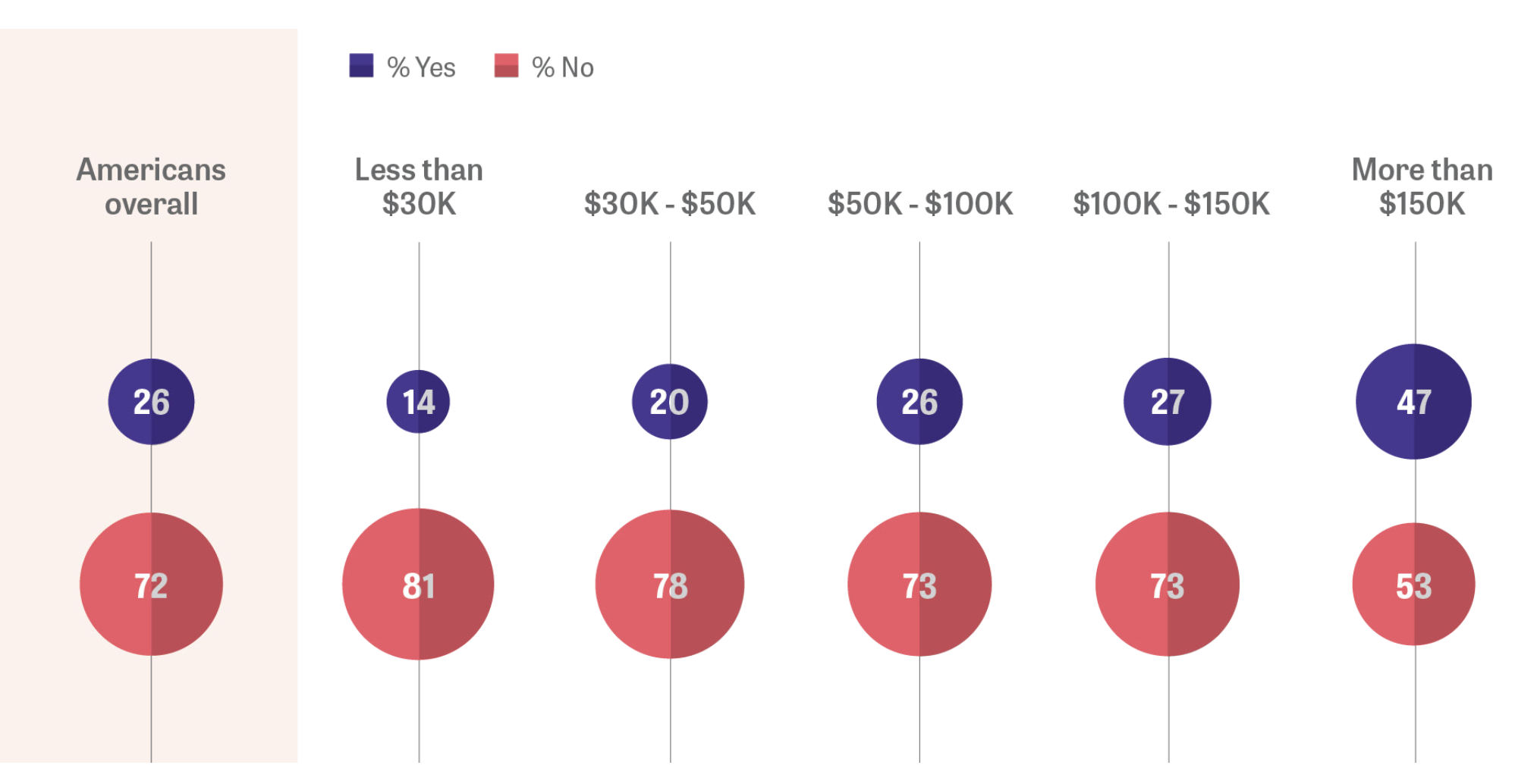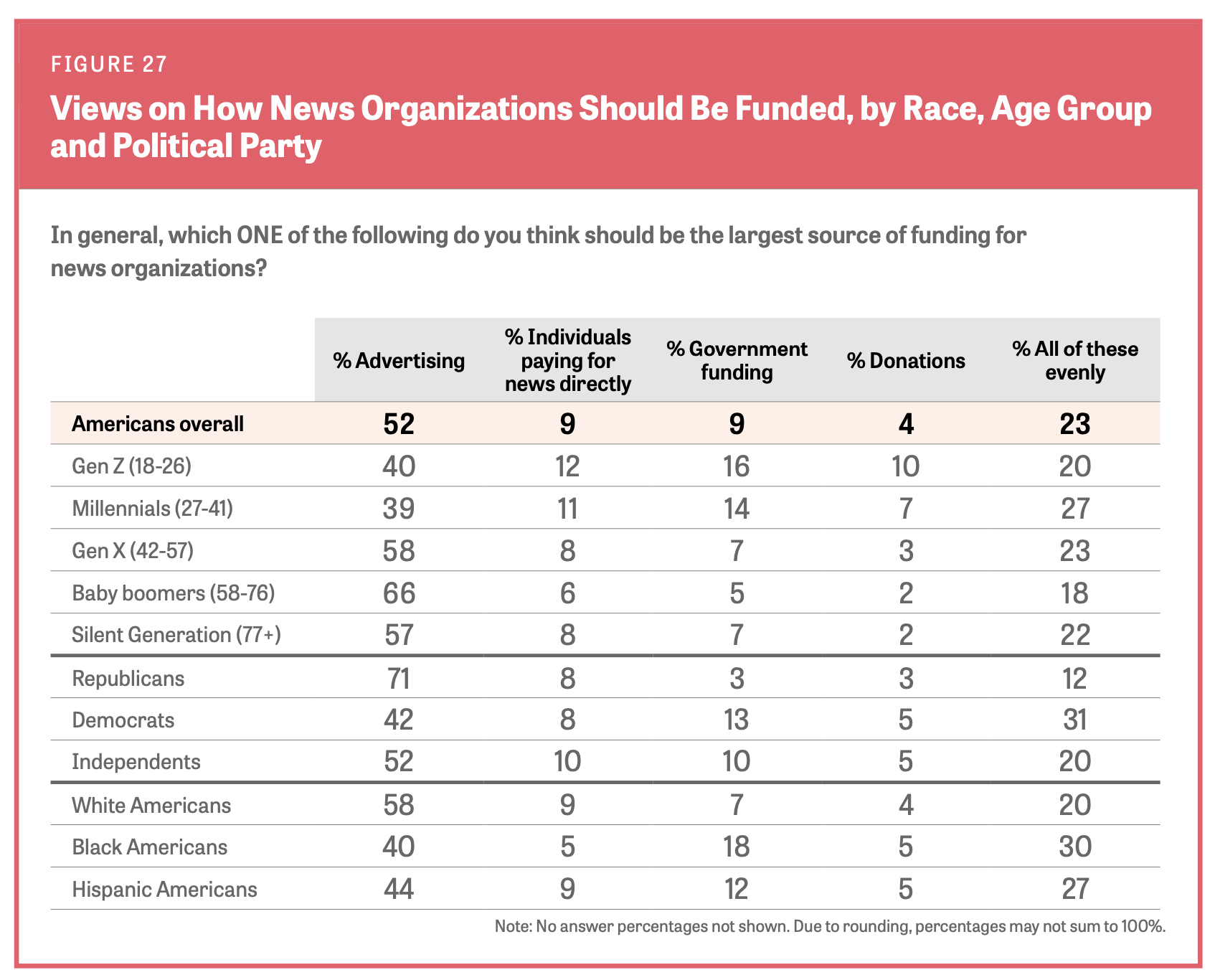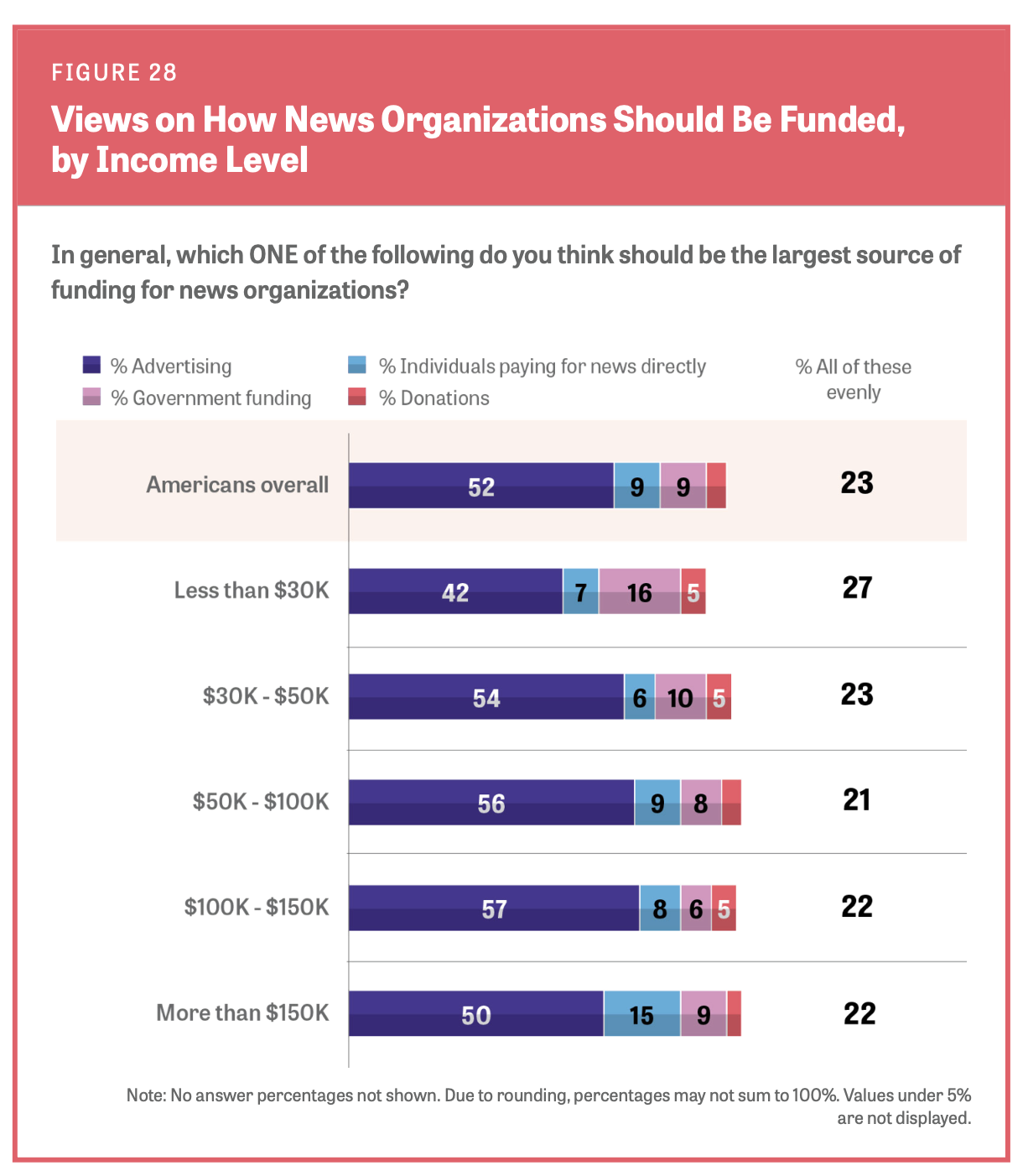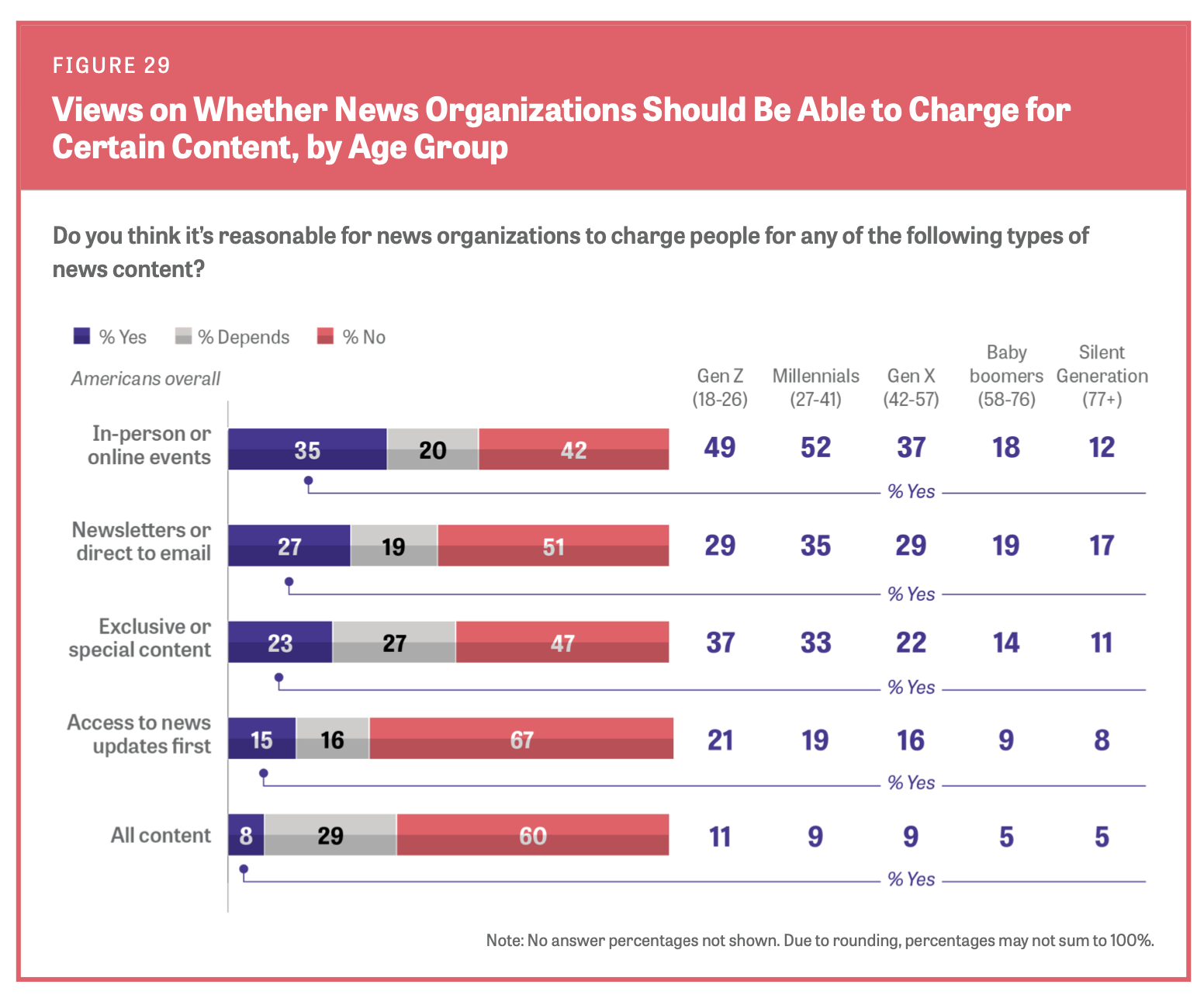
It’s hard to find things that Americans agree on, but here’s one: More than half believe that the largest funding source for news should be advertising.
A new survey from Gallup and the Knight Foundation asked a nationally representative sample of 5,593 American adults a bunch of questions about paying for news. There’s some interesting stuff here! Re: That advertising question, it was one of very few things that over 50% of respondents agreed on, when it comes to funding news.

After that, people are pretty divided. The richest Americans, for instance, are much more likely than Americans from other income groups to say that the primary source of funding for news should be individual donations. Note in the chart below, too, that the poorest Americans were quite a bit more likely than those from higher-income groups to say that the government should be the primary funding source for news.

About a quarter of Americans have ever paid for news directly. Americans making more than $150,000 a year are, not surprisingly, much more likely to have paid for news than those in any other income group (even the $100,000 to $150,000 bracket).

People do not, generally, like the idea of paying customers receiving news before others — though younger adults are more open to it, and to other types of payment models, than older adults are.

Subscription was far and away the most common way to pay for news. (Confusingly, 15% of those who’d paid for news also said they’d paid either with “micropayments” or a “day pass” — where are they encountering those in the wild?)

Only one percent of respondents who “were trying to access a news story online and had to pay to keep reading or watching it” said they would, simply, pay up. (Nearly half, meanwhile, said their first move would be to try to access the story free from a different outlet.)

Democrats are 14 percentage points more likely than Republicans to have paid for news. And college-educated Americans are about twice as likely to have paid for news as Americans who didn’t complete four years of college.

You can read the full report here.
This post’s earlier headline stated that “most” Americans who will pay for news are rich. That wasn’t accurate. People with household incomes over $150,000 are much more likely than the median American to pay for news. But they only make up about 20% of U.S. households, so they don’t make up a majority of those who pay.